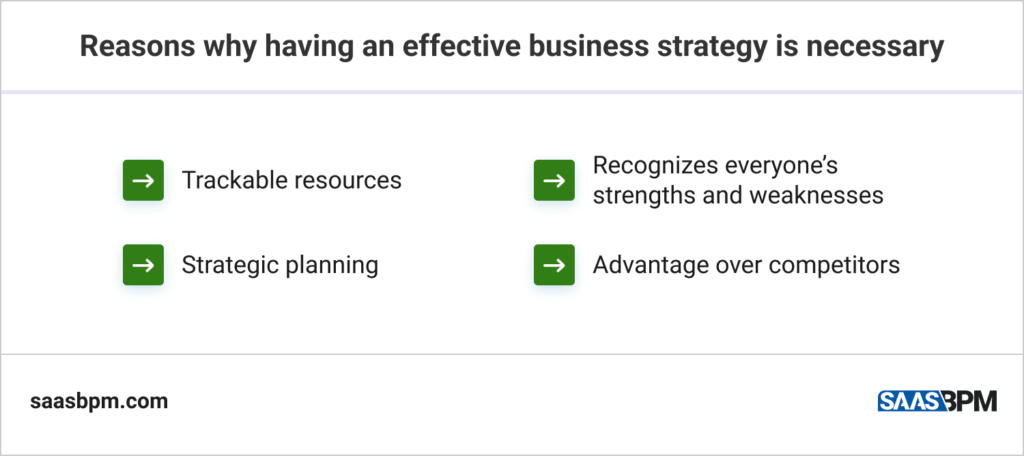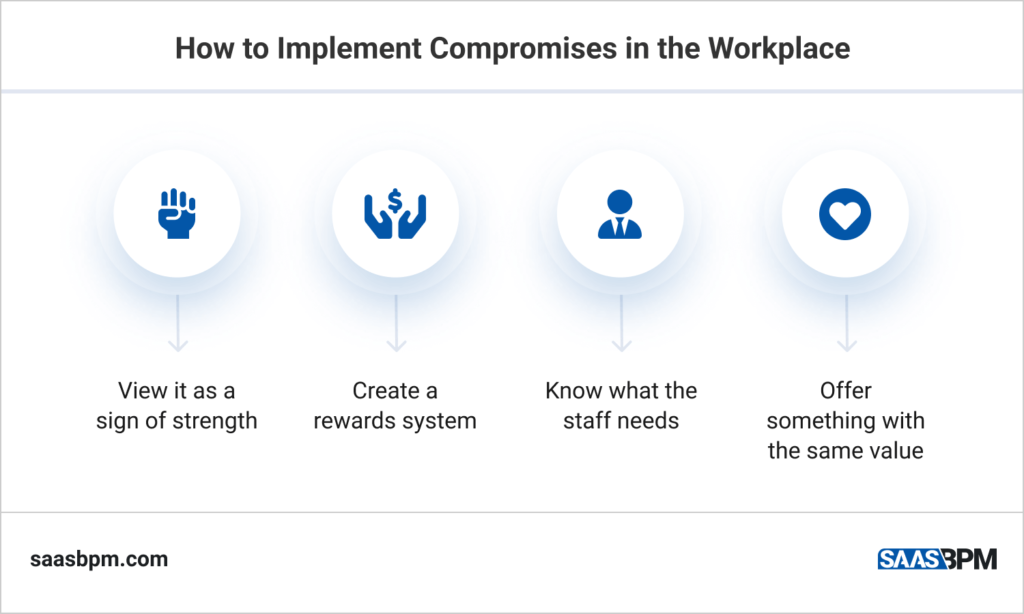Having an effective business strategy in place is crucial for any business, but so is maintaining a healthy office culture. A viable workplace environment helps you motivate and inspire your employees as effectively as possible. Most of the time, the team members’ experience at the office can make or break their careers, and a poor environment can affect the entire business.

Here are other reasons why having the right workplace culture is important. It:
- Helps improve the overall performance and teamwork.
- Aims to increase productivity within the organization.
- Decreases the percentage of employee turnovers.
- Helps reduce stress within the staff.
- Encourages the employees to be honest and transparent.
- Helps you define clear core values to ensure that your team members are working towards the same goals.
- Boosts unity and camaraderie.
Moreover, the following are the reasons why having an effective business strategy is just as necessary. It helps you:
- know where your resources are spent, which eliminates the possibility of capital and revenue loss.
- plan properly, allowing you to track your progress and processes.
- recognize your business’ and team members’ strengths and weaknesses.
- have an advantage over your competitors.

Balancing strategy and culture in the workplace can sound contradicting and confusing, but it is definitely doable, as long as you implement the right tactics.
5 Tips to Have a Perfect Balance Between Strategy and Culture in the Workplace
To support a healthy office culture and strategy, all of your goals and values must support each other. You need to properly plan all aspects with the whole team so everyone can align with the mission and vision. Below are some of the tactics that you can put in place to balance strategy and culture in the workplace.

Set the Tone Early On
Company culture refers to the attributes and values that everyone in the office shares. It is how the employees interact with each other, and it can either be intentional or not. This includes certain elements such as the style of leadership, goals, values, ethics, mission, vision, and expectations.
It can be challenging to set the tone when your team has already established a culture of their own, but changing it is still possible. However, if you are managing a startup and you have the chance to start from scratch, then it would be helpful if you could set the tone early on.
Let your staff know that it is vital for the organization to align strategy with culture. Properly communicate what type of tactics you have in place and ask yourself these questions:
- What values do you and your employees share?
- How do you want your team members to present themselves to the customers?
- How do you communicate with the individuals in your office?
- What makes you different to other businesses?
- Do your workers have similar values?
Once you have the answer to these questions, you can start deciding what type of culture you’d like to have in the office. For example, if you want your company culture to emphasize empowerment, collaboration, and inclusivity, then your strategy must consist of constant communication, a rewards system for motivation and efficiency, and one-on-one meetings with your team members.
Find a Common Language
We are used to an office process wherein the HR department is in charge of the culture, while the marketing team should take care of the strategy. This creates a sense of incoherence, and both teams can get lost in translation.
To create a perfect harmony between strategy and culture, managers must find employees that are aware of both. They must be open to collaboration and make sure that their values align. The human resources employees must share different scenarios and the outcome that the team might face, and the same should go for the marketing team.
If you want to make everything even clearer, then consider creating a glossary of terms that both teams can use. Carefully explain and define what strategy and culture are, as well as the terms that support them; i.e. values, behavior, proposition, capabilities, traits, business model, and the like. Gather both teams and ask them to come up with terms and implementations that are unclear to them. Take these into account and clearly describe what each one means so everyone in the office finds a common language that they can use to communicate.
Understand that Strategy is Easier to Change
Like what we mentioned earlier, culture is innate. It usually develops on its own, but it can also be deployed, especially if done early on in the business. Strategy is the opposite, as you need to devise it carefully to keep the company afloat and successful. With that being said, it is clear that strategy is easier to change, especially if you want to keep your current company culture and the employees in your office.
However, the consumer market changes constantly, and your strategy should follow through. You have to ensure that as your tactics evolve, they must align with your culture, as this is what your employees are used to. If you want to keep them happy and encourage them to keep on reaching their goals, you must work with them to keep a healthy balance of both. Let them know that things are bound to change over time, but the values that they have come to love will stay with the organization.
Compromising is Key
Finding the perfect balance between strategy and culture requires compromise. If you want your employees to be at their best at work, then you must provide something valuable in return. For example, you must hold team-building activities to strengthen the camaraderie within the office. In return, you can make it clear to them that you expect them to reach their KPIs and turn their work in on time.
Here are some tips to find better compromises in the office:
- View compromise as a sign of strength instead of seeing it as a weakness. The happier your employees are, the better their output will be.
- Let them know what you are willing to give in return. Create a rewards system or a guideline that your team members can follow.
- Know what your staff needs and wants. Is it additional leave credits? Gift certificates in exchange for lead generation and conversion percentages? Better health benefits?
- Offer something with the same value as what you are getting.

Communicate Your Strategy and Culture Clearly
Communicate with your employees and make sure that you are relaying all of the changes that you are planning on implementing in the organization. Say it in a way that you know every person will understand, so they can relate to it and apply it to their everyday lives at the office. If you are changing something in your strategy, then consider sharing it in the form of stories or something that you all have experienced collectively.
Doing this helps strengthen resiliency and transparency in the workplace. When the culture is strong enough, the strategies are easier to implement. Moreover, you can also explain the culture that you want for your company, both to your new and current employees:
- Explain the organization’s values, what you uphold, and the things that you are aiming to achieve.
- Clearly set your expectations from them early on. Tell them what you expect to see from them at the office and how you would want them to interact with other team members.
- Lead by example and practice what you preach.
- Hold them accountable if you see something that’s not at par with the company culture. Apply sanctions and metrics that they can follow.
- Reward the ones that are standing by the values. This can either be done through gifts, monetary compensation, or even just a simple “thank you” and “you did a great job”.
Strategy And Culture At Work: Wrapping Up
Finding a common ground between strategy and culture is now more important than ever, especially since a lot of companies are asking their employees to return to the office. The COVID-19 pandemic disrupted the relationship between strategy and culture, and if you need a reset, then now is the time to do so. Your business’ future lies in the happiness of your employees and the strategies that you employ and thus, you must find the recipe to make both work hand-in-hand.
Determine what you and your workers are familiar with, do a little bit of tweaking if needed, and then implement the tactics that we have discussed above to have a healthy balance between strategy and culture.

